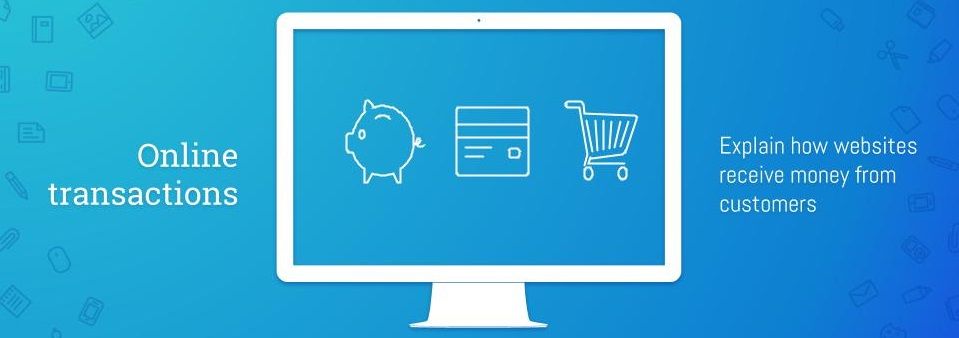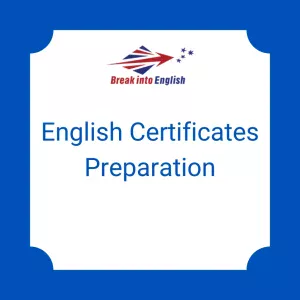ENGLISH FOR IT
If you work with computers, you probably feel frustrated by the incredible amount of jargon style English for IT you come across. Jargon is a type of language that we can use in a particular context but may not be well understood outside that context. Specifically, when we are learning English for IT purposes, it is this vocabulary rather than grammar that causes problems. Below you will find useful words and phrases in English for IT, organised into three sections:
- English for Browsing the Internet.
- English for Information Technology and Emails
- English for IT professionals: online transactions
Scroll down to the bottom of the page to download the free vocabulary list and revision exercises in our English for IT PDF

Browsing the internet – English for IT users online
Firstly, in order to go online, you will need an IPS – Internet Service Provider. An Internet Service Provider is a company such as Vodafone that provides customers with internet access. There are several ways to transmit data including dial-up, DSL, cable modem, wireless or dedicated high-speed interconnects.
Search engines such as Google or an alternative have highly complex algorithms to help you find exactly what you are looking for online. As you browse through websites and webpages you will undoubtedly click with your mouse on lots of links. Websites have homepages, this is the where you can read information or download products, movies and music. Nowadays almost everything is available online, even English for IT classes via Skype. You can store files you have downloaded your hard drive, which is part of your computer, or on a memory stick, a USB storage device. If you have a website or a youtube channel (check out our channel), you might upload content in English. In all fairness, nowadays uploading photos, files or folders to the internet is easy; you only need to click and drag your item. This moves it to an area where uploading starts automatically.
It is worth noting that in order to use web sites, you sometimes have to make an account in English. This involves setting a username and password. Online safety is very important and for this reason you should consider making your password as strong as possible.
Sometimes you click a link too soon and you have to return to the previous page, this is called going back, other times you are waiting for websites to update, to provide new information, so you will need to click refresh.
If you would like to improve and test yourself, this is a great resource in English for information on using the internet and internet technology.
English for IT – Sending Emails.
Although you don’t need to be a bilingual technology expert to send an email, we are going to need a basic amount of vocabulary in English for it. First you must make an account with an email service provider such as Gmail or Yahoo!mail. Email addresses usually use this @ symbol, for example our email breakintoenglishcontact@gmail.com , this is called the at symbol.
After logging in, you will probably want to go to your inbox to check the email you have received. You might want to reply to the sender, or to the other recipients as well, in which case you would click ‘reply to all’. Another way of sending an email is to compose a new mail, starting by making a draft to modify and correct. It is easy to attach photos or documents by clicking on the paperclip symbol or dragging your file directly onto you open draft.
When you have some important information to write in your email, it is sometimes useful to copy and paste from a website or from a word processing document. The worst type of email you can receive is spam, which often gets filtered and doesn’t even show up in your inbox, but if it does, the best advice is to never click on any links, and delete it straight away.
If you’re also using English to send emails at work you might be interested in our post Business English vocabulary. At the end of this blog post you will find an English for IT List with the words and phrases from this post. In order to help you remember them, you can also download our English for IT PDF.
If you prefer to work from a textbook, the English for IT Level 1 Coursebook has got a section on IT related vocabulary for browsing online.
English for IT professionals: Online Transactions

English for IT – online transactions
Just imagine your client asks you how a customer would complete an online transaction, you need to explain the process to your client. Of course, you are going to need specialist English for IT professionals but additionally, you will need to explain in a way that your non IT specialist client will understand:
First the customer would need to place an order. The seller’s web server will confirm availability of the product and send a response. After that, the customer checks out and completes the payment instructions. Then the server will send a payment gateway. The payment gateway will subsequently check the buyer’s ability to pay with the bank.
The bank will respond and send payment acceptance or rejection to the seller’s web server through the payment gateway. Finally the customer will receive order confirmation or rejection. Optionally the customer can register and make an account before completing the online transaction process.
List of vocabulary in English for IT
Use this table in order to remind yourself of the English for IT vocabulary covered in the post. You can also download exercises in our English for IT List and Exercises PDF
| THE INTERNET | EMAILS | ONLINE TRANSACTIONS |
| Link | Copy and paste | complete an online transaction |
| Refresh | At | place an order |
| Back | Spam | web server |
| Password | Attach | payment instructions |
| Update | Compose | payment gateway |
| To click | Reply to all | order confirmation |
| Search engine | Draft | rejection |
| ISP internets service provider | Inbox | register |
| Home page | Delete | make an account |
| Download | Log in | |
| Drag | Email address | |
| Memory stick or usb | Email service provider | |
| Browse | Word processing document | |
| Mouse | ||
| Hard drive | ||
| File | ||
| Folder | ||
| Username |
Useful links related to English for IT
English for Information Technology, textbook from pearson longman
The English for Information Technology Course by English4IT
Our English for IT PDF
Resources for IT in English
This article was written by Elizabeth Drayton, Teacher Trainer at Break into English, click here to arrange a free trial lesson via skype.








